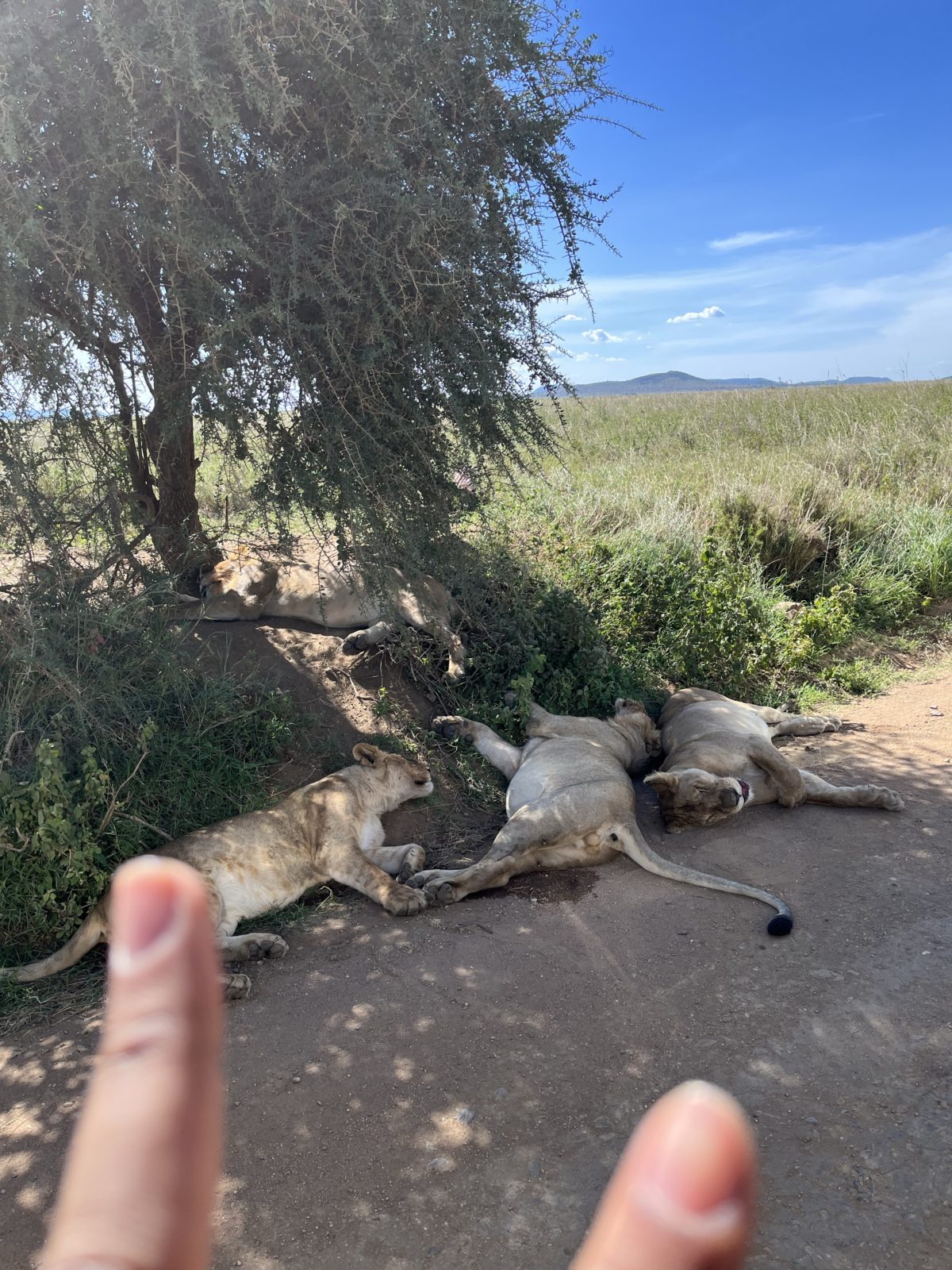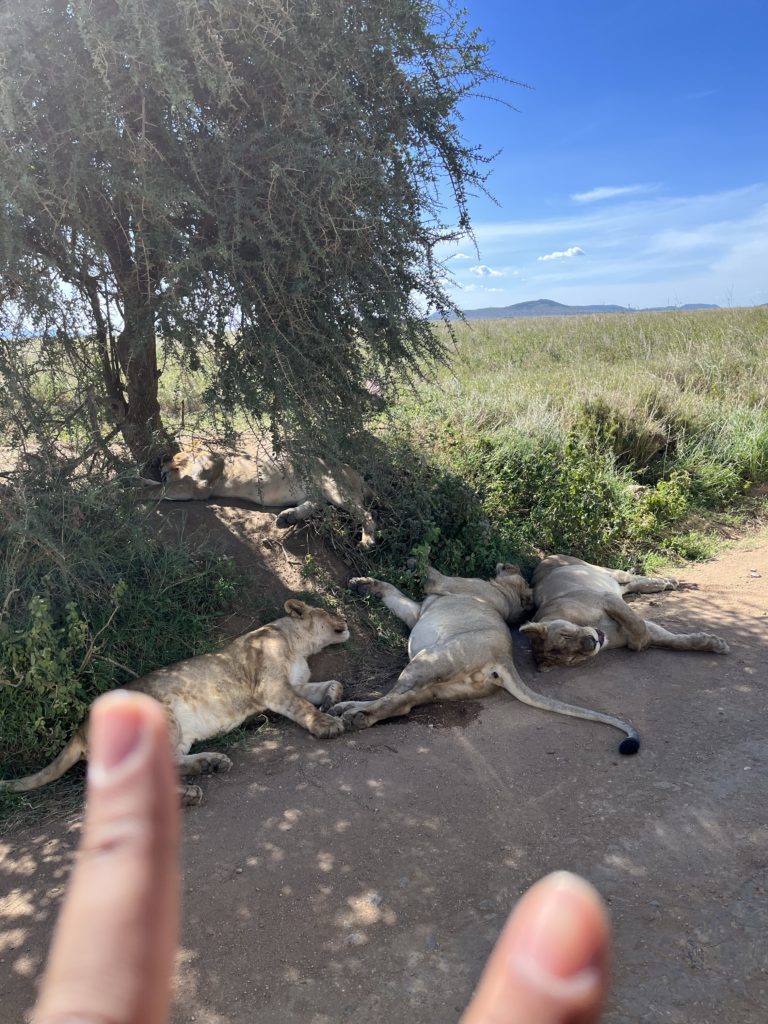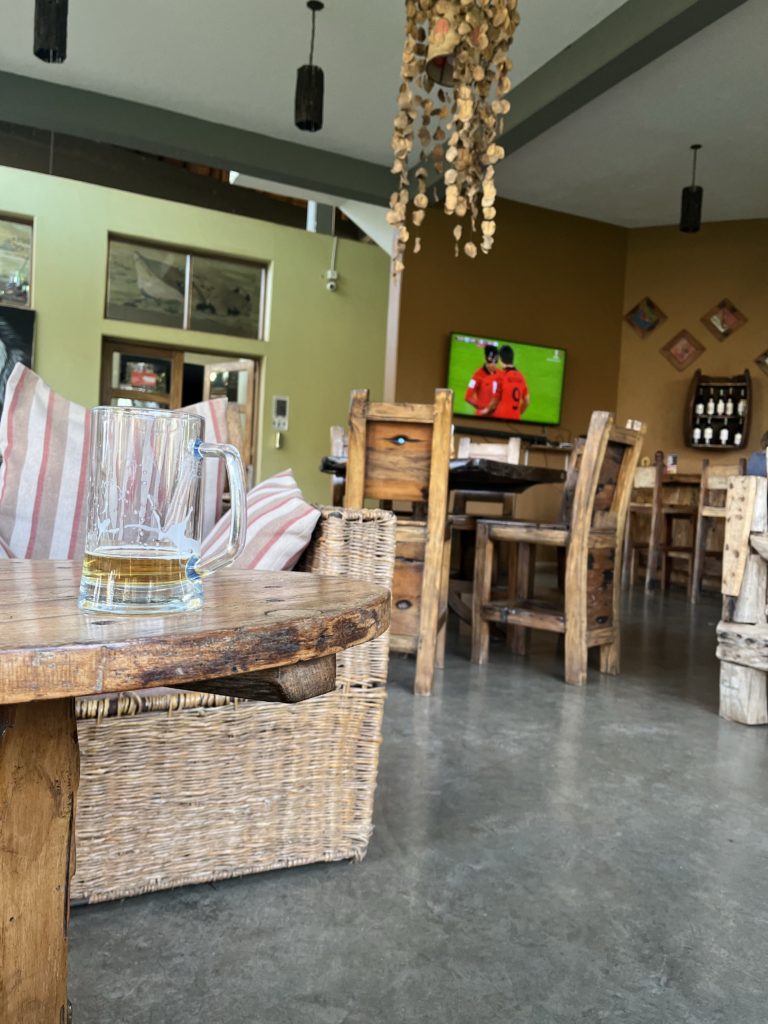We entered Serengeti around 12:30 pm on Saturday, having stopped briefly at the entrance gate to have lunch packed for us by our hotel in Karatu. Around 1 pm, our guide asked us to put the roof up, so we could stand and get a 360 degree view. “This is the cheetah region”, he told us.
For the next hour or so we just kept going round and round. We went off the main path towards some rocks. Some other jeeps had done the same. None of us had any luck.
By 2 pm we had seen nothing. Absolutely nothing. For a place like Serengeti, that takes some talent, given the overall density of animals there. We hadn’t even seen a zebra, or a wildebeest. Maybe a few gazelles (I could never figure out how to tell between Thomson’s and Grant’s through the trip, despite seeing tonnes of both on the trip). “This is not even the level of what we saw in Tarangire yesterday”, we were thinking.
And then things started to happen. First there was a herd of zebras. On Friday we had missed an opportunity to take a video of a zebra crossing the road (literally a “zebra crossing”, get it?). And now we had a whole herd of zebras crossing the road in front of us. This time we didn’t miss the opportunity (though there was no Spice Telecom).

And then we saw a herd of buffaloes. And then a bunch of hippos in a pool. We asked our guide to take us closer to them, and he said “oh don’t worry about hippos. Tomorrow I’ll take you to a hippo pool with over a fifty hippos”. And sped off in the opposite direction. There was a pack of lions fallen asleep under a tree, with the carcass of a wildebeest they had just eaten next to them (I posted that photo the other day).
This was around 3 pm. By 4 pm, we had seen a large herd of wildebeest and zebra on their great annual migration. And then seen a cheetah sitting on a termite hill, also watching the migration. And yet another pool with some 50 hippos lazing in it. It was absolutely surreal.
It was as if we had had a “hot hand” for an hour, with tremendous sightings after a rather barren first half of the afternoon. We were to have another similar “hot hand” on Monday morning, on our way out from the park. Again in the course of half an hour (when we were driving rather fast, with the roof down, trying to exit the park ASAP) we saw a massive herd of elephants, a mother and baby cheetah, a pack of lions and a single massive male lion right next to the road.
If you are the sort who sees lots of patterns, it is possibly easy to conclude that “hot hands” are a thing in wildlife. That when you have one good sighting, it is likely to be followed by a few other good sightings. However, based on a total of four days of safaris on this trip, I strongly believe that here at least hot hands are a fallacy.
But first a digression. The issue of “hot hands” has been a long-standing one in basketball. First some statisticians found that the hot hand truly exists – that NBA (or was it NCAA?) players who have made a few baskets in succession are more likely to score off their next shot. Then, other statisticians found some holes in the argument and said that it was simply a statistical oddity. And yet again (if i remember correctly) yet another group of statisticians showed that with careful analysis, the hot hand actually exists. This was rationalised as “when someone has scored a few consecutive baskets, their confidence is higher, which improves the chances of scoring off the next attempt”.
So if a hot hand exists, it is more to do with the competence and confidence of the person who is executing the activity.
In wildlife, though, it doesn’t work that way. While it is up to us (and our guides) to spot the animals, that you have spotted something doesn’t make it more likely to spot something else (in fact, false positives in spotting can go up when you are feeling overconfident). Possibly the only correlation between consecutive spottings is that guides of various jeeps are in constant conversation on the radio, and news of spottings get shared. So if a bunch of jeeps have independently spotted stuff close to each other, all the jeeps will get to see all these stuffs (no pun intended), getting a “hot hand”.
That apart, there is no statistical reason in a safari to have a “hot hand”.
Rather, what is more likely is selection bias. When we see a bunch of spottings close to one another, we think it is because we have a “hot hand”. However, when we are seeing animals only sporadically (like we did on Sunday, not counting the zillions of wildebeest and zebra migrating), we don’t really register that we are “not having a hot hand”.
It is as if you are playing a game of coin tosses, where you register all the heads but simply ignore the tails, and theorise about clumping of heads. When a low probability event happens (multiple sightings in an hour, for example), it registers better in our heads, and we can sometimes tend to overrepresent them in our memories. The higher probability (or “lower information content”) events we simply ignore! And so we assume that events are more impactful on average than they actually are.
Ok now i’m off on a ramble (this took a while to write – including making that gif among other things) – but Nassim Taleb talks about it this in one of his early Incerto books (FBR or Black Swan – that if you only go by newspaper reports, you are likely to think that lower average crime cities are more violent, since more crimes get reported there).
And going off on yet another ramble – hot hands can be a thing where the element of luck is relatively small. Wildlife spotting has a huge amount of luck involved, and so even with the best of skills there is only so much of a hot hand you can produce.
So yeah – there is no hot hand in wildlife safaris.





